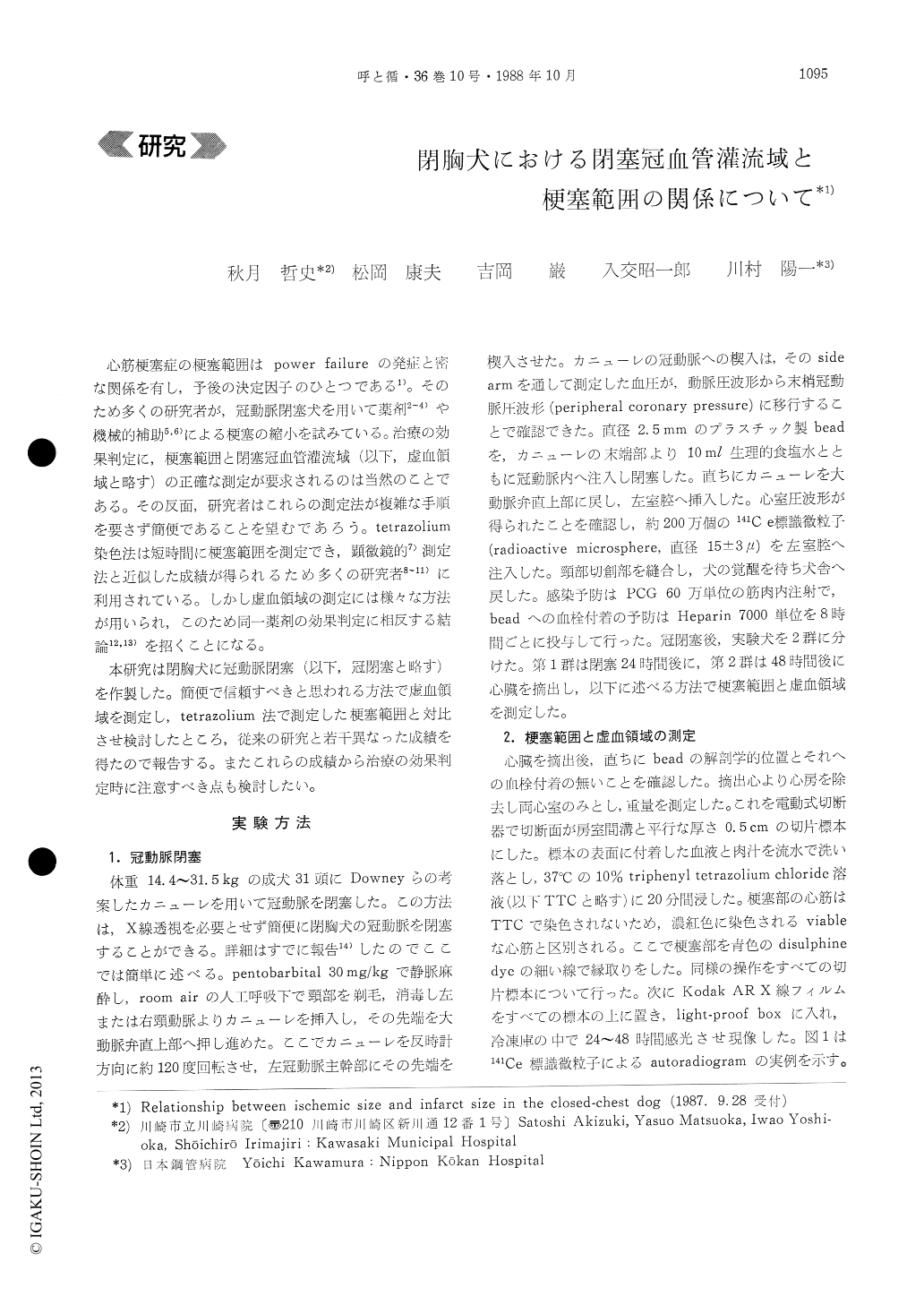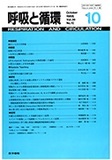Japanese
English
- 有料閲覧
- Abstract 文献概要
- 1ページ目 Look Inside
心筋梗塞症の梗塞範囲はpower failureの発症と密な関係を有し,予後の決定因子のひとつである1)。そのため多くの研究者が,冠動脈閉塞犬を用いて薬剤2〜4)や機械的補助5,6)による梗塞の縮小を試みている。治療の効果判定に,梗塞範囲と閉塞冠血管灌流域(以下,虚血領域と略す)の正確な測定が要求されるのは当然のことである。その反面,研究者はこれらの測定法が複雑な手順を要さず簡便であることを望むであろう。tetrazolium染色法は短時間に梗塞範囲を測定でき,顕微鏡的7)測定法と近似した成績が得られるため多くの研究者8〜11)に利用されている。しかし虚血領域の測定には様々な方法が用いられ,このため同一薬剤の効果判定に相反する結論12,13)を招くことになる。
本研究は閉胸犬に冠動脈閉塞(以下,冠閉塞と略す)を作製した。簡便で信頼すべきと思われる方法で虚血領域を測定し,tetrazolium法で測定した梗塞範囲と対比させ検討したところ,従来の研究と若干異なった成績を得たので報告する。またこれらの成績から治療の効果判定時に注意すべき点も検討したい。
To assess the relationship between myocardial infarct size and perfused area with occluded coro-nary artery (risk size), coronary occlusions were produced using plastic beads via a special cannula in closed-chest dogs. The dogs were subjected to either 24 or 48 hours of elapsed ischemia, after which the hearts were excised and sliced. Infarct size was determined by a histochemical staining method using triphenyl tetrazolium chloride (TTC). Risk size was measured by an autoradiography with 141Ce labelled microspheres which visualized risk area as a cold area. For both 24 hours and 48 hours post occlusion, infarct size and risk size were linearly related to each other and infarct in the endocardium was larger than that in the epi-cardium. However, the percentage of risk area which evolved to infarct 48 hours post occlusion was higher than that of 24 hours post occlusion in both endocardial and epicardial layers. All dogs which showed a cold area in the autoradiogram had infarction. But, infarction could not be detected by TTC staining in two dogs, which did not show cold areas even though the beads were located in the coronary artery. Therefore, when we evaluate the effect of certain drugs on the reduction of infarct size by using TTC staining within 24 hours after coronary occlusion, we might fail to distinguish between a delay of injury and a sus-tanined reduction of infarct size.

Copyright © 1988, Igaku-Shoin Ltd. All rights reserved.


